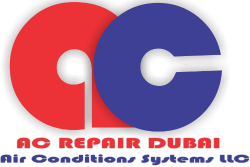CHILLER SALES IN DUBAI
We Sell Air cooled packaged chillers, ranging from 4 TR to 520 TR in various series like APCD, APCY and ACMR with efficient, low noise and high performance Screw, Hermetic Scroll, Hermetic and Semi-hermetic reciprocating compressors with high heat transfer efficient evaporators and condenser coils. Unit operation is controlled by Microprocessor controllers and available with electronic expansion valves as well. These chillers are suitable to connect BMS with different protocols as standard. Chillers are available with R134a and R410A refrigerants.
We Sale Chillers Which are ideally suited for Hotels, high rise buildings, stores, hospitals and to any modern cooling applications. Every unit is fully tested before delivery and ready for installation. Chillers are designed and manufactured to operate at a wide range of ambient temperatures, especially to meet the severe climatic conditions of the Gulf.
Water cooled packaged chillers are a quality product with an innovative design with minimum foot print required for the unit installation. The total package is assembled on a rigid structural steel skid for easy handling and robust support during installation and operation. High efficiency heat transfer shell and tube evaporators are used . The EER of these units are substantially high and a real energy saver. Water Cooled chillers are available in a wide range capacity and with different compressors and refrigerants. WPCD, WPCN and WPCY are the available series machines.
What is a Chiller?
A commercial or industrial chiller is basically an extra-large fridge, just like the one you have at home but many times bigger. It is a refrigeration system used in commercial or industrial facilities like perishable food cold rooms or in a manufacturing plant. Other names for a Chiller are - coolers, refrigerators,
How does a Chiller Work?
A chiller removes heat from a liquid by means of a gas compression or absorption refrigeration cycle. This liquid is then circulated through a heat exchanger to cool air, water or equipment as required.
In a refrigeration system, the working fluid is called the refrigerant. Chilled water can also be used as a refrigerant and has a variety of applications from space cooling to process uses.
Different working fluids have different properties and, in choosing one in particular, the designer must first identify the major requirements of the refrigeration system.
Commercial Chillers
Commercial refrigeration systems cover a wide variety of equipment from small "plug-in" vending machines, display cabinets and food service coolers through to large supermarket refrigeration systems.
Users of commercial refrigeration systems need chillers that are reliable and effective, while meeting increasing demands for environmentally friendly solutions.
Industrial Chillers
Industrial refrigeration covers a wide range of applications - from high temperature process chilling to very low temperature applications such as those used in medical freezers.
Industrial chillers are used for controlled cooling of products, mechanisms and factory machinery in a wide range of industries such as:
- Plastics - injection and blow moulding
- Metal working - cutting oils, welding equipment, die-casting and machine tooling
- Chemical processing
- Pharmaceutical formulation
- Food and beverage processing
- Paper processing
- Cement processing
- Filling and bottling plants
- Vacuum systems
- X-ray diffraction
- Power supplies
- Power generation stations
- Analytical equipment
- Semiconductors
- Compressed air and gas cooling
- MRI machines and lasers
Chillers for industrial applications can be centralised so that a single large chiller can serve multiple cooling needs. On the other hand, they can be de-centralised so that each application or machine has its own compact chiller. Each approach has its advantages. It is also possible to have a combination of both types of chiller.
At Chiller & Aircon Services we provide environmentally friendly solutions for the entire industrial refrigeration sector.
What Different Types of Chiller Do You Get?
There are three main types of commercial or industrial chiller:
1. Water Cooled Chillers
Chilled water is often used to cool and de-humidify air in mid- to large-size commercial and industrial facilities. Water-cooled chillers are mainly for indoor installation and operation. They are cooled by a separate condenser water loop and connected to outdoor cooling towers to expel heat to the atmosphere. Click here for more details.
2. Air Cooled Chillers
Air-cooled chillers are installed and operated mainly outdoors. They are directly cooled by ambient air being mechanically circulated directly through the machine's condenser coil to expel heat to the atmosphere. No remote cooling tower is needed.
3. Evaporatively Cooled Chillers
Absorption Chillers are powered by a heat source such as steam and has very few moving parts. They have a very low electrical demand but a very high energy (steam) demand.
The Components of a Mechanical Chiller
A mechanical chiller is powered by an electric motor, steam turbine or gas turbine. It has four basic components through which the refrigerant passes:
Evaporator
The evaporator “exchanges” heat.
It helps heat energy to migrate from a water stream into the refrigerant gas. During this process, the refrigerant absorbs large amounts of heat without changing temperature. Evaporators can be plate type or shell and tube type.
Compressor
A compressor pumps the refrigerant gas. The mechanism for compressing gas differs between compressors, and each has its own application. Common mechanical compressors include Reciprocating, Screw , Scroll or Centrifugal. They can be either hermetic (welded closed) or semi-hermetic (bolted together and are normally serviceable).
Condenser
The condenser is a heat exchanger which helps heat to move from the refrigerant gas to either water or air. Air cooled condensers are made from copper tubes (for the refrigerant flow) and aluminium fins (for the air flow). Condensers can be air cooled, water cooled, or evaporative.
The Benefits of an Absorption Chiller
The thermodynamic cycle of an absorption chiller is driven by a heat source which is usually delivered by means of steam, hot water or combustion.
Compared to electrically powered chillers, an absorption chiller has a very low electrical power requirement - very rarely above 15 kW combined consumption for both the solution pump and the refrigerant pump.
However, its heat input requirements are large and it needs a much larger cooling tower than a gas-compression chiller. From an energy-efficiency point of view it comes into its own if cheap, high-grade heat or waste heat is readily available. In sunny climates, like we have in Africa, solar energy can be been used to operate absorption chillers.
The absorption cycle uses water as the refrigerant and lithium bromide as the absorbent. The cycle works as a result of the strong affinity that these two substances have for one another. The entire process occurs in almost a complete vacuum.
Well-known compressor brands
We are able to supply and install the following major brands of air-conditioning compressors:




